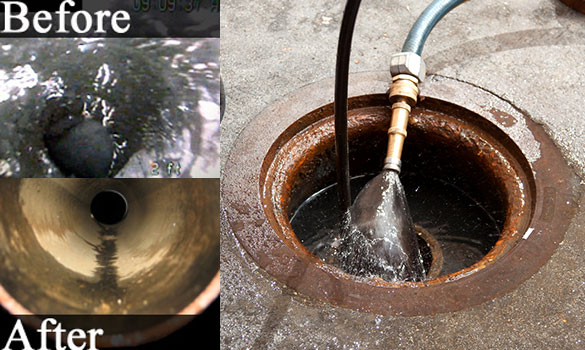
Table of Contents
Sewer Line Inspection: Ensuring the Health of Your Plumbing System
Discover the importance of sewer line inspection for maintaining a healthy plumbing system. Learn about the process, benefits, and common FAQs.
Introduction
In the realm of home maintenance, few tasks are as crucial yet often overlooked as sewer line inspection. Your plumbing system’s health depends significantly on the condition of its sewer lines. Neglecting this aspect can lead to costly repairs and health hazards. This comprehensive guide will delve into the importance of sewer line inspection, its process, benefits, and address common FAQs to equip you with essential knowledge for preserving your plumbing system’s integrity.
The Significance of Sewer Line Inspection
Sewer line inspection is the cornerstone of proactive plumbing maintenance. It involves a thorough examination of underground sewer lines to identify any issues such as blockages, leaks, or structural damage. This preemptive approach enables homeowners to address potential problems before they escalate into costly repairs or pose health risks.
Understanding the Inspection Process
Sewer line inspection typically utilizes advanced technologies such as video cameras mounted on flexible rods. These cameras allow plumbers to inspect the interior of sewer lines remotely, providing real-time visuals of any issues. Additionally, specialized equipment, including locators and sensors, helps pinpoint the exact location and nature of problems within the sewer system.
The Benefits of Regular Inspection
Regular sewer line inspection offers numerous benefits, including:
Early Detection of Issues: Identifying problems early prevents them from worsening and causing extensive damage to the plumbing system.
Preventing Health Hazards: Undetected sewer line issues can lead to sewage backups, which pose significant health hazards due to exposure to harmful pathogens.
Savings: Dealing with small problems found during inspections is less expensive than fixing large problems brought on by unkempt sewer systems.
Preserving Property Value: Maintaining a healthy plumbing system, including sewer lines, enhances the overall value of the property.
Ensuring Optimal Functionality A well-maintained sewer line ensures optimal functionality of your plumbing system. By conducting regular inspections and addressing any issues promptly, homeowners can enjoy peace of mind knowing that their plumbing infrastructure is operating efficiently.
Common FAQs about Sewer Line Inspection
How often should sewer line inspection be performed?
- Regular inspection is recommended every 1 to 2 years, depending on factors such as the age of the plumbing system and the presence of trees near sewer lines.
Which indicators point to the need for a sewer line inspection?
- Signs such as slow drains, foul odors emanating from drains, sewage backups, or noticeable changes in the lawn above sewer lines warrant immediate inspection.
Can tree roots damage sewer lines?
- Yes, tree roots are a common main cause of sewer line damage. They can infiltrate pipes seeking moisture and nutrients, leading to blockages and structural issues.
Is sewer line inspection covered by homeowners insurance?
- Typically, routine sewer line inspection is not covered by standard homeowners insurance policies. However, specific coverage may vary, so it’s advisable to consult your insurance provider.
Are there DIY methods for sewer line inspection?
- While DIY inspection kits are available, they lack the precision and expertise provided by professional plumbers. It’s recommended to enlist the services of a licensed plumber for accurate assessments.
What is trenchless sewer line inspection?
- Trenchless sewer line inspection is a non-invasive method that utilizes advanced technologies to inspect sewer lines without extensive excavation. It minimizes disruption to landscaping and reduces repair costs.
Conclusion
Sewer line inspection is an indispensable aspect of maintaining a healthy plumbing system. By understanding its significance, process, and benefits, homeowners can proactively safeguard their property from costly repairs and health hazards associated with neglected sewer lines. Regular inspection, coupled with prompt resolution of identified issues, ensures optimal functionality and preserves the value of your property.
